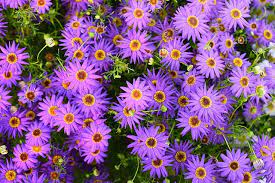**Caring for Chrysanthemums: Best Practices for Health and Beauty**

Chrysanthemums, known for their vibrant blooms and resilience, are popular additions to gardens, landscapes, and indoor settings. Proper care is essential to ensure these versatile flowers thrive and continue to dazzle with their colors throughout the growing season. This comprehensive guide explores the best practices for caring for chrysanthemums, covering everything from planting and watering to pruning and pest management.
**1. Choosing the Right Location**
Selecting the appropriate location is key to successful chrysanthemum care. Chrysanthemums thrive in full sun to partial shade, depending on the climate. In warmer regions, afternoon shade can help protect chrysanthemums from excessive heat, while in cooler climates, full sun exposure is preferred to encourage robust growth and abundant flowering.
Ensure the planting site has well-drained soil to prevent waterlogging, which can lead to root rot. Amending heavy clay soils with organic matter, such as compost or peat moss, improves drainage and provides essential nutrients for healthy growth. Ideally, chrysanthemums should be planted in areas with good air circulation to reduce the risk of fungal diseases.
**2. Planting Chrysanthemums**
Spring or early summer is the best time to plant chrysanthemums, allowing them to establish roots before the flowering season. When planting, dig a hole slightly larger than the root ball of the chrysanthemum plant. Gently loosen the roots before placing the plant in the hole and backfilling with soil.
Space chrysanthemum plants according to their mature size, typically 18-24 inches apart, to allow for adequate air circulation and prevent overcrowding. Water newly planted chrysanthemums thoroughly to settle the soil around the roots and promote establishment. Apply a layer of mulch around the plants to conserve moisture and suppress weed growth.
**3. Watering and Fertilizing**
Proper watering is crucial for chrysanthemum health. Water chrysanthemums deeply but infrequently, allowing the soil to dry slightly between waterings. Avoid overhead watering, which can promote fungal diseases. Instead, water at the base of the plants to deliver moisture directly to the roots.
During the growing season, feed chrysanthemums with a balanced fertilizer formulated for flowering plants. Apply fertilizer according to package instructions, usually every 4-6 weeks, to promote robust growth and abundant flowering. Avoid excessive nitrogen, which can result in lush foliage at the expense of flowers.
**4. Pruning and Deadheading**
Regular pruning and deadheading are essential for maintaining tidy and healthy chrysanthemum plants. Pinch back young chrysanthemum shoots in spring to promote bushy growth and encourage more flower buds. Pinching involves removing the top 1-2 inches of new growth to encourage lateral branching.
Throughout the growing season, remove spent flowers (deadheading) to prevent seed formation and encourage continuous blooming. Use clean, sharp pruners to cut spent flower stems just above a set of healthy leaves or lateral bud. Deadheading redirects the plant’s energy into producing new flowers, prolonging the blooming period.
**5. Managing Pests and Diseases**
Chrysanthemums are generally low-maintenance but can be susceptible to certain pests and diseases. Keep an eye out for common pests such as aphids, spider mites, and caterpillars, which can be managed with insecticidal soap or neem oil. Regularly inspect plants for signs of infestation and take prompt action to prevent damage.
To prevent fungal diseases such as powdery mildew and gray mold, avoid overhead watering and ensure good air circulation around plants. Remove and dispose of infected plant material promptly to prevent the spread of disease. Applying fungicidal sprays preventively can help protect chrysanthemums during periods of high humidity.
**6. Overwintering Chrysanthemums**
In colder climates, overwintering chrysanthemums requires special attention. After the first frost, cut back chrysanthemum plants to within a few inches of the ground. Mulch around the base of the plants with straw or shredded leaves to insulate the roots from freezing temperatures.
Alternatively, lift chrysanthemum plants from the ground and transplant them into containers for overwintering indoors. Place containers in a cool, bright location, such as a garage or unheated basement, and water sparingly to prevent root rot. In spring, reintroduce chrysanthemum plants to outdoor conditions once the danger of frost has passed.
**Conclusion**
Caring for chrysanthemums involves attention to detail and regular maintenance to ensure healthy growth and abundant flowering. By following best practices for planting, watering, fertilizing, pruning, and pest management, gardeners can enjoy vibrant chrysanthemums that brighten the landscape with their colors and enhance the beauty of any outdoor or indoor setting. With proper care, chrysanthemums thrive and reward gardeners with their resilience and captivating blooms season after season.
**Advanced Care Techniques for Chrysanthemums: Ensuring Health and Vigor**
Taking care of chrysanthemums involves more than just basic maintenance; advanced care techniques can elevate these stunning flowers to their full potential. From specialized pruning methods to targeted fertilization and disease prevention strategies, this guide delves into advanced care techniques for chrysanthemums, empowering gardeners to cultivate healthy, vigorous plants that thrive and dazzle with their beauty.
**1. Specialized Pruning Techniques**
Pruning is an essential aspect of chrysanthemum care, and employing specialized techniques can enhance plant health and flowering performance. Beyond routine pinching and deadheading, consider the following pruning methods:
– Disbudding: Removing side buds or lateral shoots to redirect the plant’s energy into developing larger, more showy terminal blooms. Disbudding encourages the production of exhibition-quality flowers and prevents overcrowding of blooms.
– Staking and Support: Tall or heavily laden chrysanthemum varieties may require staking to prevent stems from bending or breaking under the weight of flowers. Use bamboo stakes or plant supports to gently secure stems and maintain upright growth.
– Root Division: Overcrowded chrysanthemum clumps can benefit from root division, which involves carefully digging up the plant and separating the root mass into smaller sections. Replant divisions in well-prepared soil to rejuvenate overcrowded plants and stimulate new growth.
**2. Targeted Fertilization Regimens**
Tailoring fertilizer applications to the specific needs of chrysanthemums can optimize growth and flowering. Consider the following targeted fertilization regimens:
– High-Potassium Fertilizers: Chrysanthemums benefit from fertilizers with a higher potassium content during the flowering stage. Potassium promotes strong root development, enhances flower color and size, and increases overall plant vigor.
– Controlled-Release Fertilizers: Utilize slow-release or controlled-release fertilizers to provide a steady supply of nutrients over an extended period. This minimizes the risk of nutrient leaching and ensures consistent growth and flowering throughout the season.
– Foliar Feeding: Apply liquid fertilizers directly to the leaves (foliar feeding) to deliver nutrients quickly and efficiently. Foliar feeding is particularly beneficial during periods of rapid growth or when plants show signs of nutrient deficiency.
**3. Disease Prevention and Integrated Pest Management**
Preventing diseases and managing pests proactively is critical for maintaining healthy chrysanthemum plants. Implement integrated pest management (IPM) strategies and disease prevention techniques:
– Neem Oil Sprays: Use neem oil-based insecticides to control common pests such as aphids, spider mites, and whiteflies. Neem oil disrupts the life cycle of pests without harming beneficial insects.
– Organic Fungicides: Apply organic fungicides preventively to protect against fungal diseases such as powdery mildew and botrytis. Copper-based fungicides and sulfur-based products are effective against fungal pathogens.
– Cultural Practices: Practice good garden hygiene by removing and disposing of diseased plant material promptly. Avoid overhead watering, which can promote fungal diseases, and provide adequate spacing between plants to improve air circulation.
**4. Overwintering Strategies for Long-Term Success**
Successfully overwintering chrysanthemums ensures healthy, vigorous plants for the next growing season. Implement these overwintering strategies:
– Mulching: Apply a thick layer of organic mulch, such as straw or shredded leaves, around chrysanthemum plants to insulate the roots from freezing temperatures. Mulch also helps retain soil moisture and suppresses weed growth.
– Winter Protection: Construct temporary cold frames or hoop houses to shield chrysanthemums from harsh winter conditions. Cover plants with frost blankets or row covers to minimize exposure to freezing temperatures and drying winds.
– Container Gardening: Transplant chrysanthemum plants into containers for overwintering indoors. Place containers in a cool, bright location, such as a garage or unheated porch, and water sparingly to prevent root rot.
**5. Advanced Propagation Techniques**
Expand your chrysanthemum collection through advanced propagation techniques:
– Stem Cuttings: Take stem cuttings from healthy, mature chrysanthemum plants in late spring or early summer. Dip cuttings in rooting hormone and plant them in a well-draining rooting medium. Provide bottom heat and humidity to encourage root development.
– Division: Divide established chrysanthemum clumps in spring or fall to create new plants. Carefully separate the root mass into smaller sections and replant divisions in prepared soil.
By incorporating advanced care techniques into your chrysanthemum gardening routine, you can cultivate robust, healthy plants that showcase the full beauty and potential of these stunning flowers. From specialized pruning and targeted fertilization to disease prevention and overwintering strategies, advanced care techniques empower gardeners to achieve exceptional results and enjoy the rewards of successful chrysanthemum cultivation.

